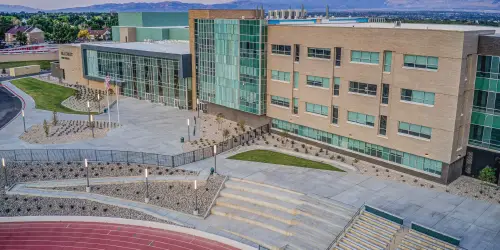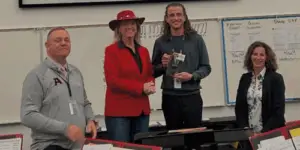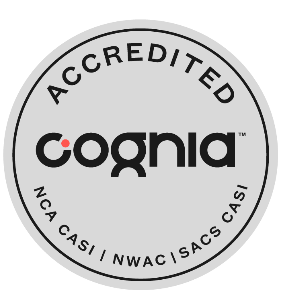When Canyons was created in 2009, the school district inherited a portfolio of aging buildings, some of which hadn’t seen major upgrades in decades. In 16 years, the District has made huge strides rebuilding or significantly remodeling 27 schools.
These modernized buildings are safer, more efficient, and designed with today’s learners in mind. But the work isn’t done. With 49 buildings — ranging in age from 72 to two years of age — and 6.2 million square feet to maintain, Canyons is constantly juggling the day-to-day demands of upkeep while also planning for future improvements.
For a behind-the-scenes look at how the District prioritizes facility needs, Connect Canyons sat down with some of the brains behind the bricks: CSD’s Associate Director of Facilities Ryan Jakeman and Jordan High Principal Dr. Bruce Eschler. No matter the size of the project — from replacing galvanized pipes and failing HVAC systems to installing new roofs and carpet — the goal is to create safe learning environments that make our communities proud.
A well-kept school promotes student achievement, raises property values and contributes to local economies, said Jakeman. “Our schools build community pride and send the message to students that, ‘we believe in you’ and ‘what you are doing here is important.’”
Of course, just like with our homes, things are going to break and wear out from time to time, which is why Canyons employs professional custodians, electricians, journeymen, locksmiths, fire suppression experts — a whole quiver of jump-and-run experts to keep schools in tip-top shape.
“We have such amazing Facilities staff who go above and beyond to ensure our schools are safe and our students are learning,” said Dr. Eschler. “A big shout out to them for all they do.”
1:44 – 1:52
We discuss major upgrades currently in the works and explain how we prioritize facility needs. Dr. Eschler talks about why “little things” like furniture and electrical outlets matter and how buildings must evolve as education evolves.
3:52 – 4:24
When Canyons was created, the District performed an audit of the buildings we inherited, which identified more than $650 million in deferred maintenance. How did the District prioritize rebuilds and upgrades, taking into account the age of chillers, boilers, and electrical systems as well as seismic safety and the functionality of classrooms? What’s a Facilities Condition Index?
10:21 – 10:56
How does the District determine when a building would cost more to repair than rebuild from scratch?
11:50 – 12:31
How does the District balance ongoing maintenance needs with larger, longer-term improvement projects and how do we finance improvements? The District has ongoing capital facilities funding that is reserved solely for that purpose. For upgrades larger in scope, such as the rebuild of schools, the Canyons Board of Education has asked voters to approve general obligation bonds. CSD voters have approved two general obligation bonds in 16 years. Lease revenue bonds are another financing mechanism. The District also works to manage its money responsibly, often refinancing bonds to repay them earlier, saving taxpayers millions in interest payments.
13:53 -14:14
Seeing the rising cost of construction, Canyons wisely invested early in rebuilding its largest buildings, including high schools. Among some of the ongoing projects are upgrades at Jordan High, Hillcrest High, Corner Canyon High, and Eastmont Middle School. Another priority for the District is equitably distributing resources to ensure all students have access to high-quality programs.
16:13 – 16:36
School safety is another priority. Canyons began investing in security vestibules well before they became required under Utah law. Security vestibules steer visitors into the Main Office to check in before they can proceed into the school. The District has also invested in surveillance cameras and other safety equipment.
20:21 – 20:40
Due to a 14-year decline in Utah’s birth rate and soaring home prices, school enrollments are on the decline statewide. As school enrollments fluctuate along with class sizes, the District is always evaluating how to maximize the use of its taxpayer-funded buildings. Programmatic changes, such as the addition of Jordan High’s new drone and aviation program, the expansion of Teen Centers and onsite employee day care are examples of new ways CSD’s buildings are being put to use. CSD’s buildings are community assets. Our fields, tracks, and tennis courts are open for public use and reserved by sports clubs. Our buildings are regularly rented by outside groups for events and activities.
26:11 – 26:36
Jakeman describes some of the high-need priorities on the horizon for Canyons.





